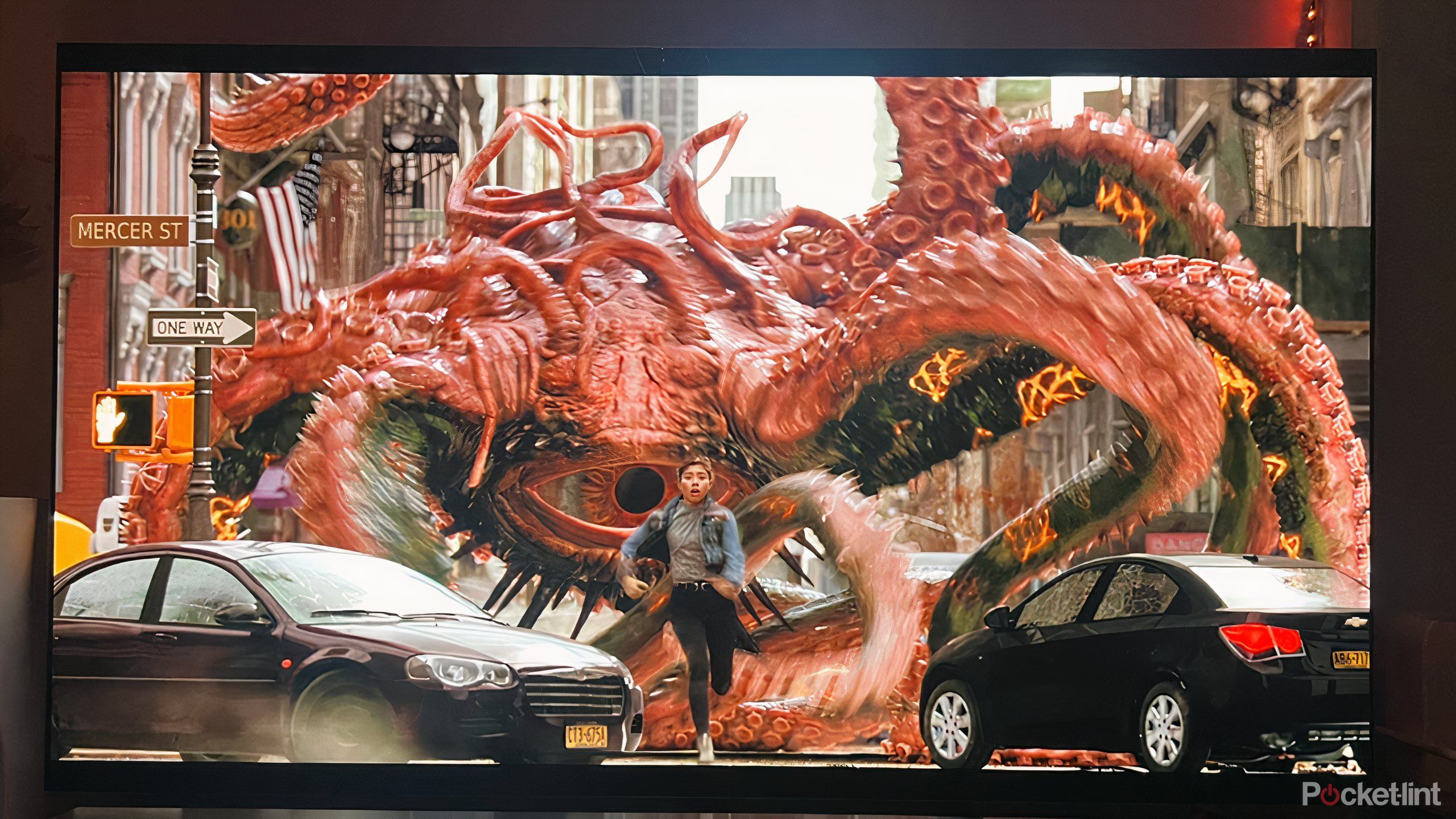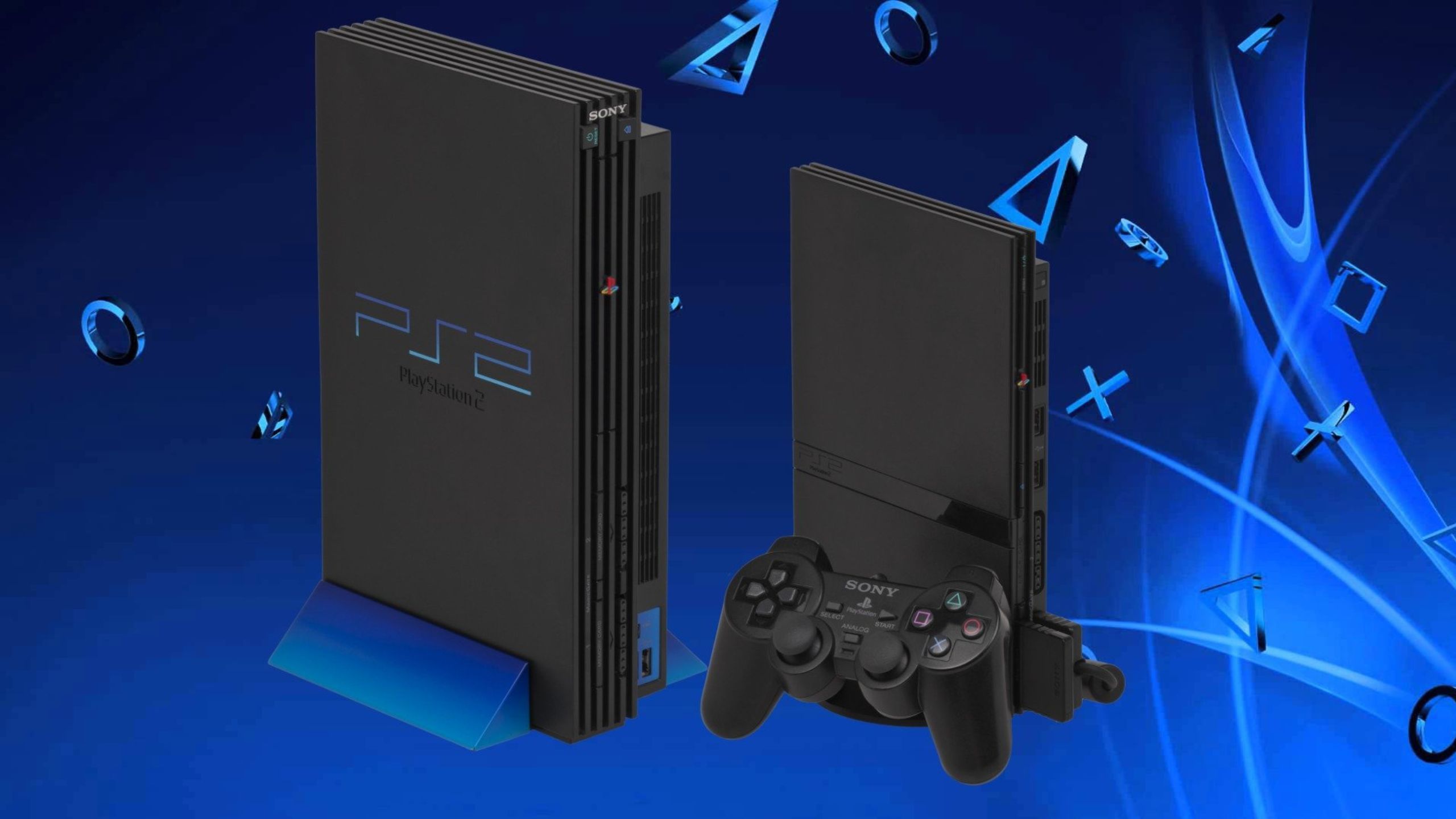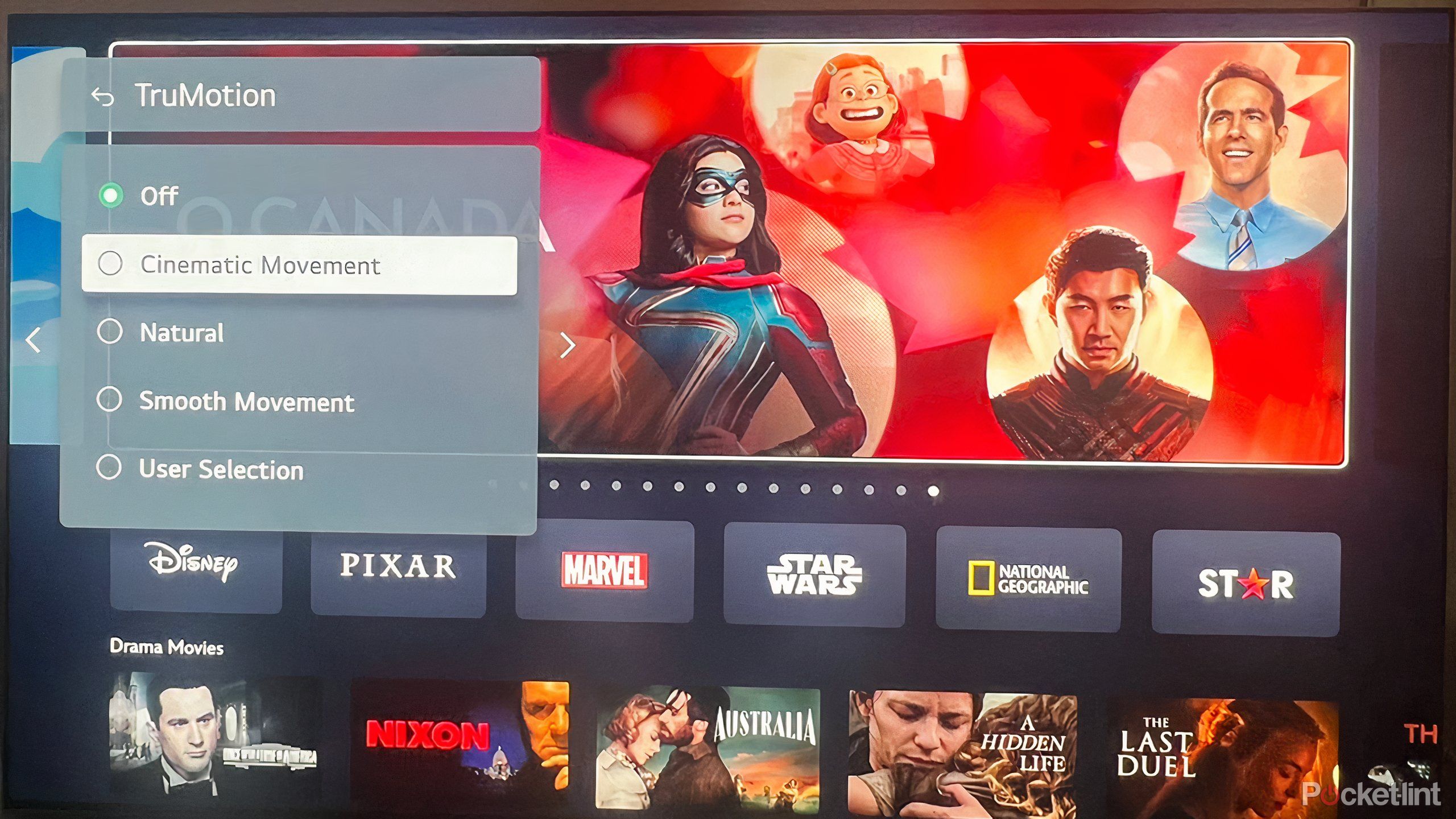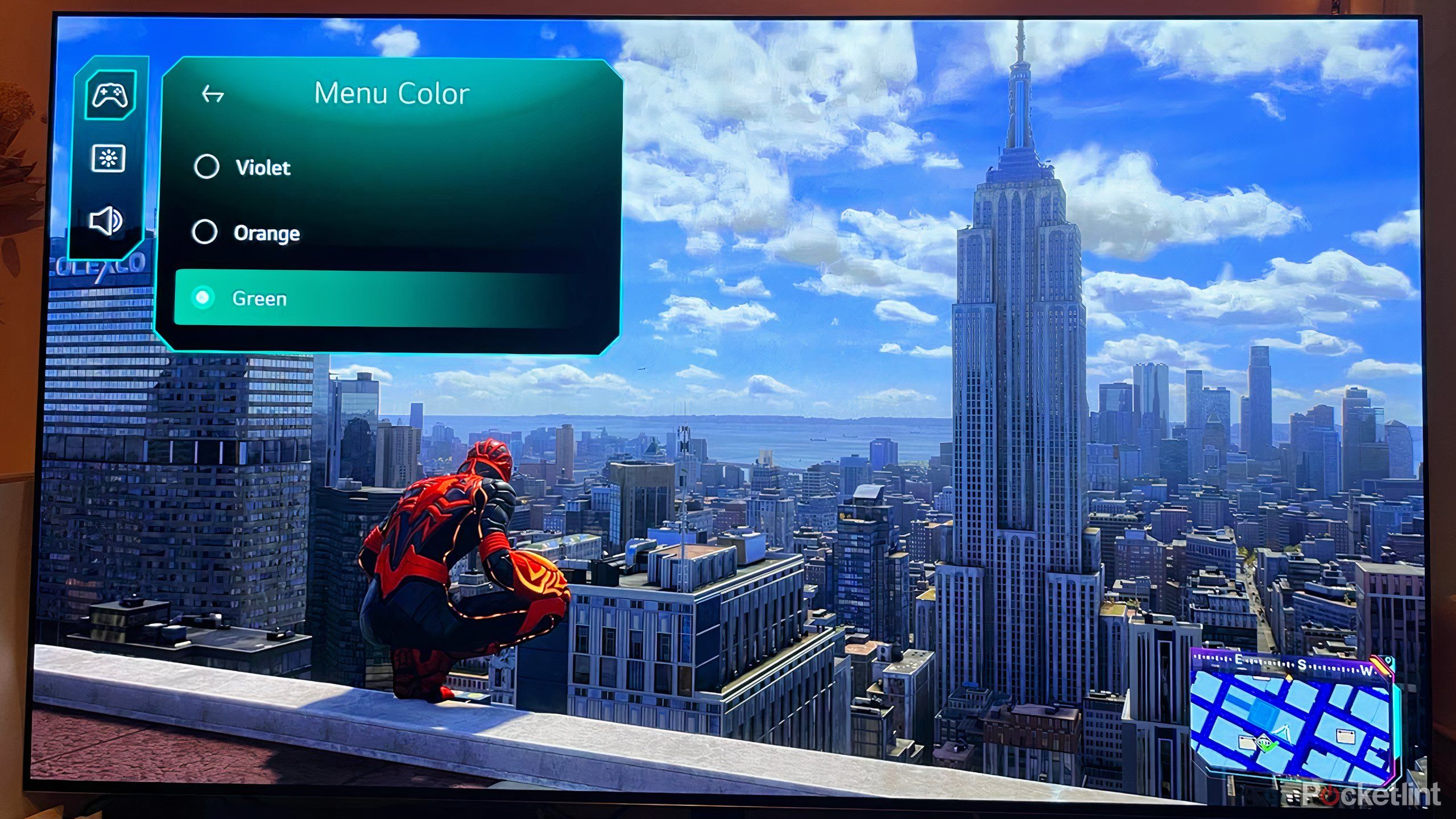
Key Takeaways
- Refresh rate is how many times the TV image refreshes per second, with higher rates leading to smoother images.
- Native refresh rate is a hardware spec; take note of the artificially inflated motion rate that TV makers promote.
- A higher refresh rate is helpful when watching action movies, live sports, or playing games on the latest gen consoles.
There are plenty of importation specifications worth considering when buying a new smart TV. Resolution, processing power, screen technology, and video and audio formats all inform the quality of the smart TV, and all the ways it can serve effectively as your home entertainment hub. A sometimes overlooked, and easily confusing spec is refresh rate. It’s a simple component that companies often conflate or obscure when selling TVs to customers.
It influences not just how you watch TV, but also the content you enjoy the most, especially if you’re an avid gamer with newer consoles. Understanding refresh rate, including what it does to different content and all the ways TV manufacturers tinker with it, is helpful when shopping around for a new TV. Here’s what you need to know.
What is refresh rate?
A simple yet important hardware component
Refresh rate is the number of times your TV image refreshes per second. Measured in Hertz (Hz), the two most common refresh rates in smart TVs are 60Hz or 120Hz. A smart TV with a 60Hz refresh rate will see an image on screen refresh 60 times per second. In general, a higher refresh rate is better than a lower one, because there are more images being populated on screen each second.
Refresh rate is a hardware specification. When you’re looking to find out the exact rate of your TV, you’ll want to look for what most TV manufacturers display as ‘native refresh rate.’ This is the rate without any software adjustments.
Most high-end TVs offer a refresh rate of 120Hz, with some models hitting 144Hz.
Why is refresh rate important?
The key to unlocking smooth images on screen
The main reason refresh rate is so important, and why it’s generally better to find a smart TV with a higher rate, is that the more images that appear on-screen per second, the smoother and more coherent that image appears. This is particularly important when you’re watching fast-moving content, such as live sports or action movies. Higher refresh rates lead to a reduction in motion blur, creating a more detailed and coherent set of images on screen.
A piece of content shot at 30 frames per second (FPS) fits ideally into a refresh rate of 60Hz.
This occurs in part due to the frame rate at which most content is shot. Frame rate plays into refresh rate, and its ideally that the latter can be equally divided by the former. For example, a piece of content shot at 30 frames per second (FPS) fits ideally into a refresh rate of 60Hz. The TV will essentially double each frame per second, making a visually smooth image on screen. However, lots of movies are shot at 24 FPS, which doesn’t divide so easily into a 60Hz refresh rate. It does, though, line up with a 120Hz refresh rate.
A refresh rate of 120Hz is also ideal for anyone gaming on the latest gen consoles, as both PlayStation 5 and Xbox Series X can display content at 120fps. If you’ve an older TV with a native 60Hz refresh rate, you won’t be experiencing your powerful new console to its fullest capacity.

Related
5 best-selling consoles of all time
Wondering if your favorite console managed to sell enough to make it to the top spot? Here are the 5 best-selling consoles of all time.
What is motion rate?
This software enhancement makes shopping around confusing
Just about every TV manufacturer has its own way of creating a significantly higher refresh rate, albeit artificially. Because refresh rate is a hardware component that is essentially capped at 144Hz, TV makers use software to inflate it, with numbers like 240, 480, or even 960 being flung around. This is motion rate, an artificial software specification that each company basically makes up. It doesn’t mean it’s worthless; motion rate is meant to simulate a higher refresh rate. But it does require some caution because the native refresh rate is more important.
Every manufacturer has a different name for it. LG calls it TruMotion, while Sony refers to it as MotionFlowXR. If there’s a feature on your TV that has the word ‘motion’ in it, it’s likely refresh rate enhancement technology.
Motion rate can also lead to the dreaded soap-opera effect, which is the uncanny, over-smoothing of content on the screen that evokes, in some brains, a dated soap opera. Everything on screen seems weird, and you might not be able to place it, but you’ll know it when you see it. Motion smoothing is helpful for older content, but it can create a jarring image in newly shot films and shows, particularly highly-detailed action movies.
You’ll have the option to turn off the motion smoothing, something most viewers do. Newer smart TVs with settings like Filmmaker Mode will automatically turn off the setting, while some models, like LG’s latest G4 OLED, will allow you to toggle the setting’s intensity from high to medium to low.
Perception is everything when watching TV
Find the TV that fits your personal preferences
It’s important to keep in mind that everyone experiences images on screen just a little differently. Some people may notice a difference between a refresh rate of 120Hz and 144Hz, while others won’t. For some individuals, the soap opera effect isn’t noticeable or an issue. Some people will experience judder, your TV’s attempt to reconcile differences in frame rate and refresh rate, more pronounced than others.
It’s important to opt for a TV with a higher refresh rate as it’s more compatible with more content sources, and generally will make the image better, but keep in mind that you may still want to employ a motion rate to make the TV suited to how you perceive images.
All of that is to say that watching TV and experiencing what’s happening on screen is highly personal. It’s important to opt for a TV with a higher refresh rate as it’s more compatible with more content sources, and generally will make the image better, but keep in mind that you may still want to employ a motion rate to make the TV suited to how you perceive images. The best way to find the right picture that works for you is to have a TV that gives you plenty of options when it comes to adjusting how content is shown on screen. A high refresh rate, paired with the ability to toggle motion rate, will go a long way to making what you watch look great.
Trending Products







